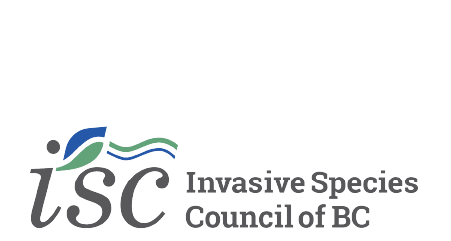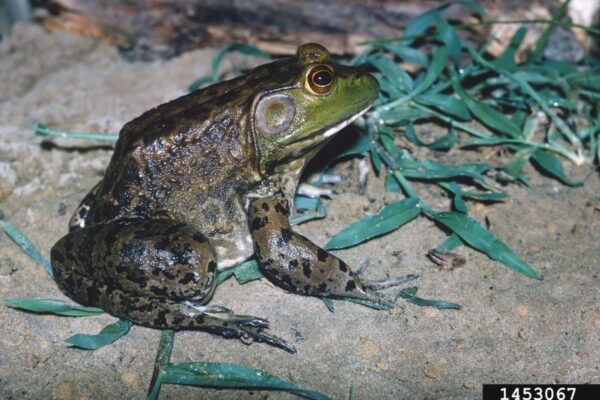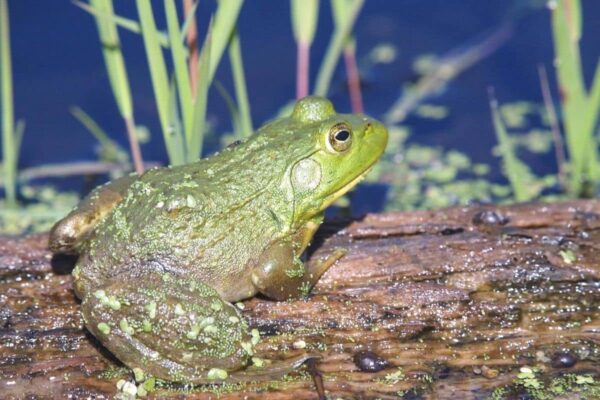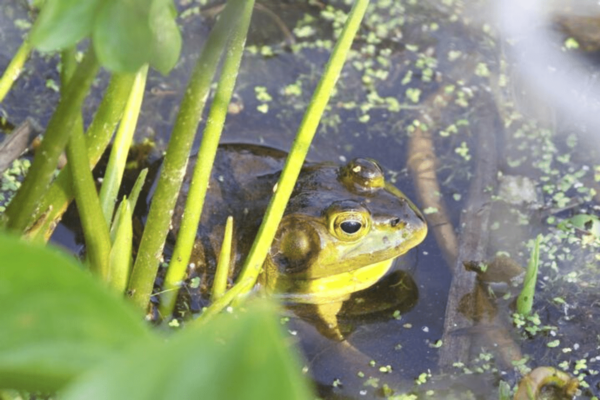American bullfrog
About This Species
The American bullfrog is the largest frog in BC. Adults can grow to 18-20 cm long, not including the legs. Bullfrogs were imported to BC for frog leg farming. They have since established throughout the Lower Mainland and Vancouver Island from Victoria to Campbell River, and west to Port Alberni. They have also been found on several Gulf Islands and in the Kootenays.
The American bullfrog is the largest frog in BC. Bullfrogs were imported to BC for frog leg farming from their native range of Eastern North America. American bullfrogs usually live in areas with warm, slow-moving water and lots of vegetation, like ponds, lakes, ditches, and slow-moving streams. They are predators with a big appetite and will eat almost anything they can fit into their mouths, including other frogs, salamanders, young turtles, small rodents, many insects, and garter snakes. This diet makes American bullfrogs a serious threat to BC’s wetland wildlife including the Northern red-legged frog (Rana aurora) and the Western painted turtle (Chrysemys picta bellii), both species at risk. American bullfrog is designated as a Regional Containment/Control species by the BC Provincial Priority Invasive Species List.
How to Identify
American bullfrogs range from olive to emerald green in colour, with mottled brown spots on their back and a paler belly. During mating season, the males’ throats turn bright yellow.
American bullfrogs are mistaken for other native and non-native frog species, but typically the bullfrog is at least twice the size of other frogs found in BC. Adults can grow to 18-20 cm long, not including the legs.
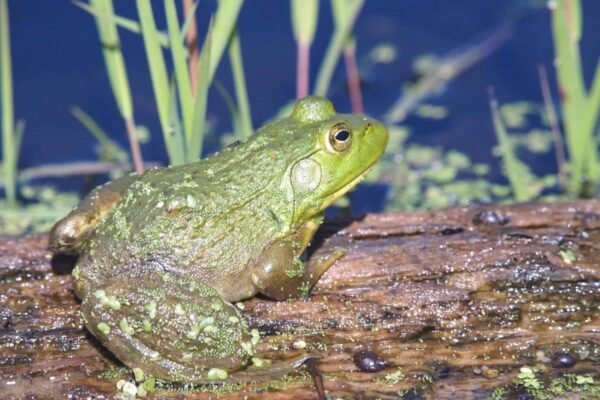
Take Action
Prevention is the best approach.
-
If you need advice about invasive species on your property or you are concerned about reported invasives in your local area, contact your local government or regional invasive species organization.

Don't Let It Loose
Learn about best practices
Invasive species are plants, animals or other organisms that are not native to BC, and have serious impacts on our environment, economy and society. Never release your plants and animals into the wild or dump aquariums or water garden debris into rivers, streams, lakes or storm sewers!

Clean, Drain, Dry
Learn about best practices
Do not collect or transport tadpoles of any kind between water bodies.
REPORT TO PROTECT BC’S BIODIVERSITY

Use the app
Observe and report to protect BC’s biodiversity

Report through this website
Use our form to tell us what you’re seeing and where.


